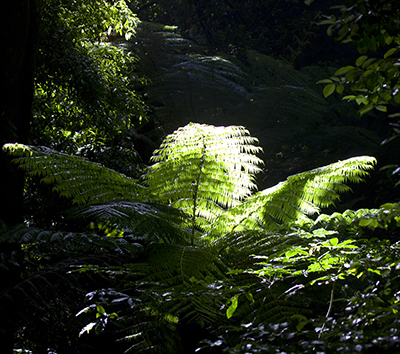| << Chapter < Page | Chapter >> Page > |
We might expect... in the summer of the 'great year,' which we are now considering, that there would be a great predominance of tree-ferns and plants allied to the palms and arborescent grasses in the isles of the wide ocean, while the dicotyledenous plants and other forms now most common in temperate regions would almost disappear from the earth. Then might these genera of animals return, of which the memorials are preserved in the ancient rocks of our continents. The huge iguanodon might reappear in the woods, and the ichthyosaur in the sea, while the pterodactyle might flit again through umbrageous groves of tree-ferns. Coral reefs might be prolonged beyond the arctic circle, where the whale and narwal [sic] now abound. Turtles might deposit their eggs in the sand of the sea beach, where now the walrus sleeps, and where the seal is drifted on the ice-floe.Sir Charles Lyell, Principles of Geology , (1830)
Lyell's book, which greatly influenced scientists in the time of Darwin, appeared just as science was comprehending the value of the fossil record in reconstructing the history of life on earth. Fossilized tree-ferns from coal mines in Britain and North America gave hints of an ancient time of lush tropical forests in those regions, and how and when those forests disappeared was a mystery waiting to be solved. The vascular plants, including ferns and their allies, are the dominant and most conspicuous group of land plants. More than 260,000 species (including ferns, gymnosperms and angiosperms) represent more than 90 percent of Earth’s vegetation. Several evolutionary innovations explain their success and their ability to spread to all habitats.

Bryophytes may have been successful at the transition from an aquatic habitat to land, but they are still dependent on water for reproduction, and absorb moisture and nutrients through the gametophyte surface. The lack of roots for absorbing water and minerals from the soil, as well as a lack of reinforced conducting cells, limits bryophytes to small sizes. Although they may survive in reasonably dry conditions, they cannot reproduce and expand their habitat range in the absence of water. Vascular plants, on the other hand, can achieve enormous heights, thus competing successfully for light. Photosynthetic organs become leaves, and pipe-like cells or vascular tissues transport water, minerals, and fixed carbon throughout the organism.
In seedless vascular plants, the diploid sporophyte is the dominant phase of the lifecycle. The gametophyte is now an inconspicuous, but still independent, organism. Throughout plant evolution, there is an evident reversal of roles in the dominant phase of the lifecycle. Seedless vascular plants still depend on water during fertilization, as the sperm must swim on a layer of moisture to reach the egg. This step in reproduction explains why ferns and their relatives are more abundant in damp environments.

Notification Switch
Would you like to follow the 'Principles of biology' conversation and receive update notifications?